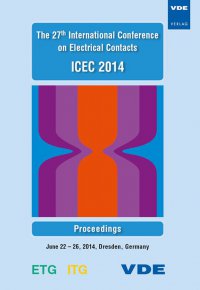Low–voltage circuit breaker arc simulation including contact arm motion
Conference: ICEC 2014 - The 27th International Conference on Electrical Contacts
06/22/2014 - 06/26/2014 at Dresden, Deutschland
Proceedings: ICEC 2014
Pages: 5Language: englishTyp: PDF
Personal VDE Members are entitled to a 10% discount on this title
Authors:
Ruempler, Christian (Eaton Corporate Research & Technology, Moon Township, PA 15108, USA)
Zacharias, Albert; Stammberger, Hartwig (Eaton Industries GmbH, 53115 Bonn, Germany)
Abstract:
The simulation of plasma processes during the current interruption in low voltage switching devices became a valuable tool for development and research. The modeling capabilities were continuously developed regarding physical and numerical aspects, as reported in previous publications. But usually any contact motion is neglected assuming a fixed contact position during the whole simulation time (stationary grid). For switching devices with small contact gaps and remarkable arc elongation due to diverging arc runners instead of an increasing contact gap, good agreement of simulated and real arc behavior can be achieved with this approach as previously shown for miniature circuit breakers. In case of current limiting molded case circuit breakers (MCCB), the contact arm is moving directly in front of the splitter plates and the motion of the contact arm has a large influence on the arc motion and time scheme, respectively. To gain meaningful results for these devices, the motion of the contact arm was implemented into our 3D coupled finite element and finite volume simulation environment in a new way in order to gain maximum performance and reliable discretization. The applicability of the new approach is demonstrated by means of an MCCB short circuit interruption simulation.


